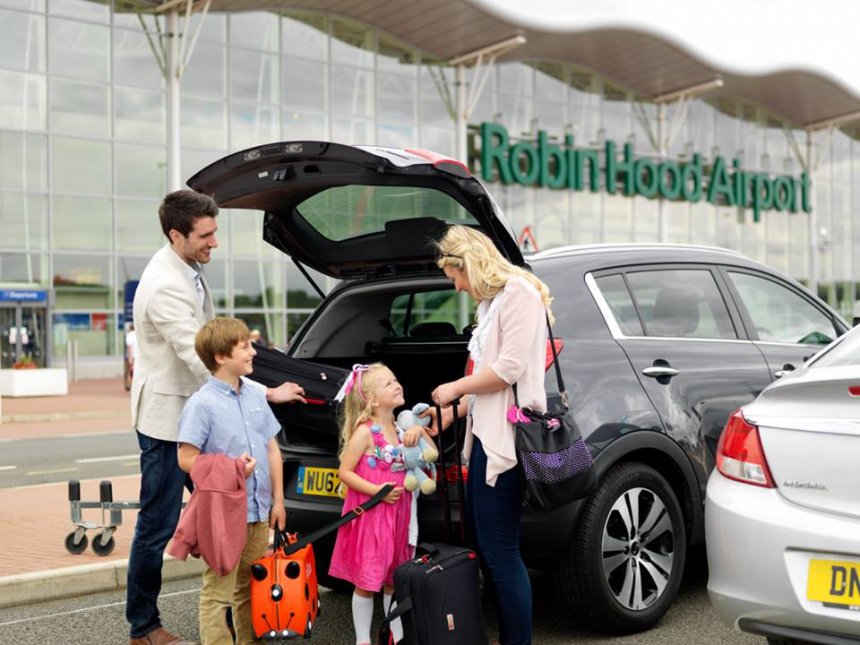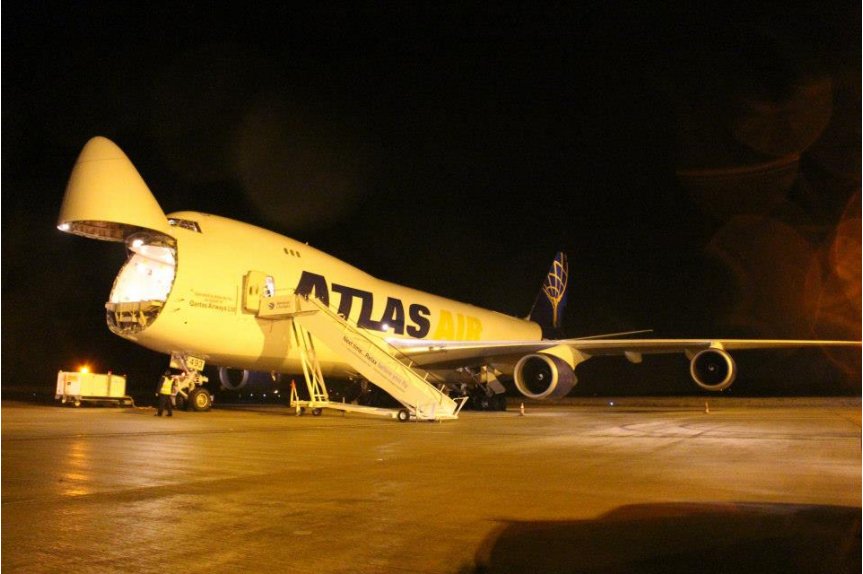New Wizz Air Routes to Riga and Bucharest Highlight Doncaster Sheffield’s Growth Ambitions
It has been a busy first quarter for Robin Hood Doncaster Sheffield Airport (DSA) in the UK and this week’s announcement from Wizz Air of a new route to Bucharest follows last week’s news that the opening of a new base at Riga International Airport in Latvia would bring another new route to the Yorkshire airport. This brings the total of new air services announced during the first three months of the year to four.
The Central and Eastern European low-cost carrier already serves DSA from Gdańsk, Katowice, Poznań, Vilnius, Warsaw and Wrocław but will introduce twice weekly services to Riga and Bucharest from June 2014. The announcement follows just weeks after UK regional charter carrier, LinksAir, revaled it is to expand into the scheduled market and will launch direct domestic flights from DSA to Belfast and the Isle of Man. Together they provide an endorsement of a new business strategy being adopted by the airport’s management team.
With strong competition in the region and a low growth economy, DSA has found it challenging to compete and claw back the historically large leakage from its catchment to other major airports like Birmingham, East Midlands, Leeds Bradford and Manchester. The facility is located on the former RAF Finningley air base in South Yorkshire and opened to scheduled operations in April 2005. Despite seeing growth up to 2007 when it broke the one million passenger milestone and even had transatlantic charter services, it has seen traffic decline, handling around 700,000 passengers for the past two years.
“We’ve spent a lot of 2013 better understanding our catchment, who our passengers are and what we need to do to reach them. Alongside this, we’ve focussed on how we present these opportunities to airlines in a fresh, credible, relevant and compelling way”
Chris Harcombe
Head of Aviation Development, Peel Airports Management
During this period there have been some changes in ownership, but now firmly back under the control of The Peel Groupit is now seeking to better compete for traffic and the attractive offering the city of Sheffield and wider South Yorkshire region can offer inbound travellers and as a market for outbound business and leisure demand.
“The airport was reacquired by The Peel Group in December 2012 and 2013 was a year of creating the conditions for growth. Externally, there was not as much news as we would have liked last year but we were developing a new strategy that we believe will help us bring sustainable air services to the region,” Chris Harcombe, head of aviation development, Peel Airports Management told The HUB during an exclusive interview this week. “Clearly the UK market is competitive and following acquisition, we’re confident that we’re now in a position to compete.”
According to Harcombe, DSA’s new strategy has challenged all previous business assumptions adopted by the airport. There has been a major investment in people with 13 new management and support roles created and 15 additional customer facing roles and a significant investment is being made across all marketing channels to showcase the airport’s revised branding, its new consumer website and its development ambitions. “We are realistic in our ambitions, not naive,” explained Harcombe, “but we have a massive opportunity to develop Doncaster Sheffield.”
The airport’s approach to route development is based around understanding its market and sustainability. “We’ve spent a lot of 2013 better understanding our catchment, who our passengers are and what we need to do to reach them. Alongside this, we’ve focussed on how we present these opportunities to airlines in a fresh, credible, relevant and compelling way,” explained Harcombe. “Our focus is on being seen as an honest partner to do business with, we don’t want routes that come and go, so we won’t recommend those that we don’t believe in.”
There are three main areas of focus for DSA. Although Thomas Cook Airlines and Thomson Airways offer seasonal holiday packages from the airport it continues to lack seat only capacity in traditional leisure markets, while keyEuropean city destinations and a hub airport for global connectivity are obvious areas for development.
“We are currently building our presence in the market and generating credibility in our message. We hope within 12 months to have re-established ourselves,” said Harcombe. ”We believe growth in the leisure market will help us achieve this and feel that it is not unrealistic to consider having an established hub feed from the airport within a five year timeframe.”

It is important for the airport to get the model right. Although having an anchor LCC tenant brings obvious benefits it can actually act as a restriction to growth. At DSA there is no major based LCC presence with a seat only offer and individual airline market shares across the region are low enabling new entrants to quickly settle alongside established operators. It also means that unlike many other UK regional airports, airlines are not engaged in intense competition for volume and yield.
“We are looking for operators with the right-sized equipment to make a route sustainable and are not adopting the boom and bust model that some other airports have used for short-term gains. We have a flexible approach to ensure that we can provide the right kind of support to partners. We understand our market and will only seek those routes that we truly believe can work,” said Harcombe.
Located around 3.5 miles southeast of Doncaster and 18 miles east of Sheffield, DSA has a large area of population within its catchment, but has suffered due to a lack of promotion of the region. ”Sheffield is the 4th largest city in England and there has been too much indifference to it in the past, reflected in the city’s lack of global connectivity,” explained Harcombe.
“There are 1.8 million people within the core city region alone. It is at the heart of the UK’s Advanced Manufacturing capabilities with (amongst others), Boeing & Rolls-Royce based here. Sheffield companies are exporting goods globally, the local universities and research capabilities are world class and the Yorkshire tourism offer is worth £7 billion a year,” he added.
The airport is now working more closely with local partners to develop a more coherent voice and message for both B2B and B2C audiences. However, despite the best business strategy you will never succeed as airport without good accessibility, something that Harcombe openly acknowledged had let DSA down in the past, but which will now provide the final piece of the jigsaw of its future business strategy.
“We have the terminal product right as we are consistently rated highly for passenger experience and we’re ranked within the Top 3 in the Which? Airport Survey for the last three surveys,” said Harcombe. “We are now overcoming the accessibility issue with the construction of the airport link road, something which will absolutely transform our potential.”
Work commenced on the £58million Link Road project in October 2013 and will provide direct access to the airport from Junction 3 of the M18. This is a hugely significant development as it will reduce journey times to Sheffield City Centre to around 25 minutes and in terms of catchment adds another 0.5 million people into the 30 minute drivetime footprint and circa one million to the 60 minute drivetime footprint. The Peel Group are investing approximately £13 million in the project which is due for completion in late 2015.
“We are currently building our presence in the market and generating credibility in our message. We hope within 12 months to have re-established ourselves. We believe growth in the leisure market will help us achieve this and feel that it is not unrealistic to consider having an established hub feed from the airport within a five year timeframe.”
Chris Harcombe
Head of Aviation Development, Peel Airports Management
The first rewards of DSA’s new strategy will be the launch of LinksAir’s new domestic services in the coming weeks. The independent carrier will introduce a regular link to George Best Belfast City Airport in Northern Ireland and a connection to Ronaldsway Airport on the Isle of Man from April using a 19-seat BAe Jetstream 31,additional routes could be added in the future.
It will introduce flights from Doncaster Sheffield on April 11, 2014 when it inaugurates flights to Belfast City, resurrecting a route previously served from the airport by Flybe between October 2006 and October 2011. LinksAir will offer a schedule aimed at the business traveller with two rotations each weekday and a single flight on a Sunday. The Isle of Man route will follow from April 14, 2014 and will be operated on a three times weekly basis, supporting business and leisure demand.
“These two new routes are a great addition to our offering,” said Harcombe. “They are also a great example of how we work with partners to ensure we get the product offer right in terms of timings, frequencies and capacity allowing a really competitive product for business. Both us and the airline know the market will sustain much more capacity, but we are looking to approach it in a sustainable way.” According to Harcombe, initial bookings for the two routes have been “very encouraging”.
But it is not all about passengers at DSA and the airport has ambitions to be “the UK’s most user friendly freight airport,” according to Harcombe. Cargo is a small but fast growing part of its business with particular specialism in Dangerous Goods, Just in Time & Heavylift/Out of Gauge Cargo.

”The Link Road will connect DSA to iPort, a £400m development which will become the UK’s largest multimodal road / rail facility when completed,” explained Harcombe. “The airport and the iPort are core developments in ‘Logistics Hub UK’ which covers the whole of Sheffield City Region and offers road, rail, air & sea connectivity as well as access to development opportunities, investment support, training and education.”
The four new routes revealed in the first quarter of 2014 provide a great platform for DSA to develop at the forthcoming Routes Europe forum in Marseille, France. “This event provides a fantastic forum to make the case for new air services, and put Doncaster Sheffield Airport at the front of airlines’ minds over the next 12 months,” said Harcombe. “We will be flying the flag for Yorkshire at this year’s event by ensuring that Doncaster Sheffield Airport has a big presence. We are investing heavily in the event this year and are sponsoring a range of digital activities at the event, including the Routes Europe App for all delegates at the event.”
